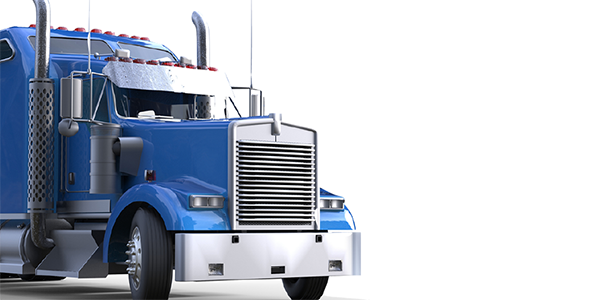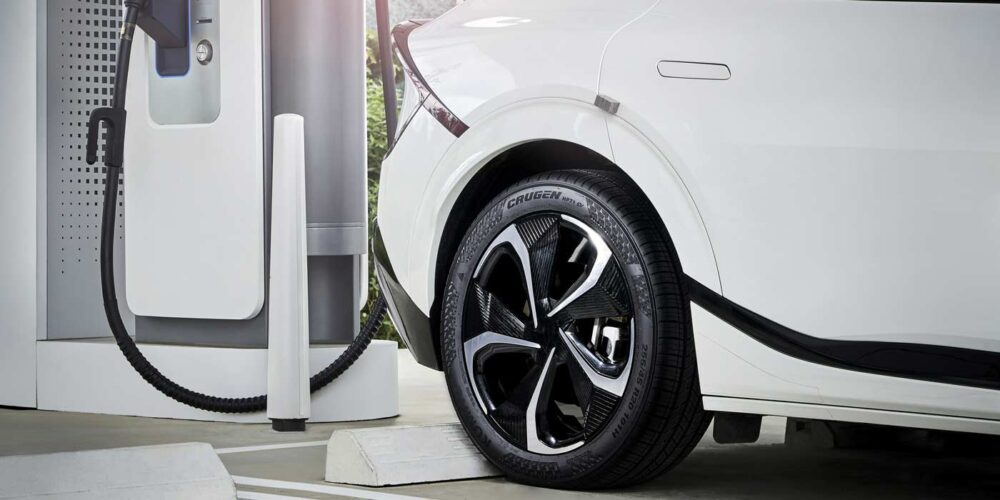Tires represent the third largest operating cost for commercial trucking fleets – only payroll and fuel represent a larger expenditure. For a commercial tire dealer looking to be the go-to partner for fleets, it’s critical to help them protect this investment.
The first step to being a better partner for fleets is to understand the tire characteristics of the different axle positions and various trucking applications.
While all tires play a role in vehicle performance, one could argue that the steer axle is the most important tire position on a commercial truck. There are several reasons that make these two tires more valuable than the other 16 shoeing your average tractor-trailer.
“Steer axle tires directly influence the steering performance and have a great impact on the handling performance of the vehicle,” says Stephen Herrington, tire development engineer for Hankook Tire America Corp.
“It’s also the position that’s closest to the driver; therefore it’s the position that’s most closely scrutinized,” adds Rick Phillips, vice president of sales for Triangle Tire USA.
Steer tires are also carrying some of the heaviest loads and have the potential to reach every axle position on a truck (if the casing remains undamaged) within a lifetime. Plus, the steer axle makes the tire susceptible to wear conditions that other tire positions may not encounter.
“The steer tire is in a unique position on the vehicle in that it’s a freewheeling position like a trailer tire, but it also pivots to allow the vehicle to make turns. So the forces that actually affect tire wear are much more dynamic on the steer axle than on any other position,” Phillips says.
Built Tough
Due to the various demands put on the steer axle, a modern steer tire has to be made tough. At its bare bones, a steer tire casing is very similar to that of a drive or trailer tire. What differentiates steer tires from these other positions is the tread design and compounding.
“A lot of the time the casings are very similar because we want the casings to be used for retreading. So, we build a very similar casing,” says Robert Palmer, director of market sales engineering at Bridgestone Americas. “Tread compound and tread pattern are the key factors that really differentiate our steer tires from our other wheel positions.”
Steer tires typically feature a five-rib design with 17 to 19/32 of tread depth.
Other construction features vary slightly by application.
Regional steer tires may feature additional sidewall protection and a tread compound to protect from scrubbing. Long-haul tires may employ tread designs and compounds to promote fuel efficiency or even wear (such as shoulder grooves). There has also been a trend recently to ply up long-haul application steer tires.
“If you’re talking long-haul application, there’s kind of an interesting trend that we’re seeing in the market place; we’re seeing increased load-carrying capacity on the steer axle. A lot of trucks now are coming with 13, 200-pound axles, which requires a heavier load capacity than we’ve seen historically,” says Palmer.
Tire dealers should work with manufacturers to make sure they’re using the best tire for a fleet’s application and desired result.
It should be noted, too, that while steer positions are designed for a truck’s front axle, some fleets run the tires in the drive and trailer position.
“Steer tires are designed to perform their best on the front axle position because they influence the handling and cornering greatly, but they can be used for the drive and trailer positions,” Hankook’s Herrington says.
Extended Life
By law, steer tires are required to be removed by 4/32. However, some fleets remove their tires much earlier to rotate the tires out to a different position.
“Every fleet will have different specs as to when to remove steer tires. Some even pull the tires at half tread and rotate to the trailer position to run out, and some run to an average of 4/32 or 5/32,” says Triangle’s Phillips.
Rotating steer tires out early can also help fleets take full advantage of retreading.
“What we see most fleets doing is pulling the tires earlier than [required by law]. The reason being if you get some irregular wear or get something happening to that tire at that lower tread depth you can damage the casing. And when you damage the casing you lose the retread,” Bridgestone’s Palmer says. “In order to get the most out of the tires, they’re pulling them earlier, putting them through the retread process, going through the inspection of the retread process and putting a high quality retread on it.”
If a steer tire is properly maintained it has the potential to be retreaded several times. Tire manufacturers offer various casing warranties, but on average, an undamaged steer tire can be expected to be retreaded two to three times. This leads to money savings for the fleets.
“If you look at the cost of buying three new tires or getting premium retreads and the new tire, you’re going to save money there in the end,” says Sanjay Nayakwadi, product strategy director, truck tires and OTR business at Bridgestone Americas.
“People in the industry don’t realize that retreads are very environmental friendly and they give just as good or better performance,” he adds.
Depending on the fleet and application, steer tires are often retreaded with a drive tread for one or two retreads before being moved to a trailer position.
Maintaining the Tire
The only way to help fleets take advantage of the cost savings associated with retreading is to help them properly maintain their tires.
“Tires never forget,” says Bridgestone’s Palmer. “[Tires] basically are a cumulative effect of what’s happened to them – poor inflation pressure, maintenance, running low, curbing or impacting, or running over object. Think about all the stuff tires see. There is a point after you do a thorough inspection that a tire casing is not retreadable.”
There are several ways tire dealers can help fleets maintain their steer tire investment.
The most important maintenance item is proper inflation pressure.
“If you had to list the most important maintenance item for a tire dealer – inflation pressure, inflation pressure, inflation pressure. You just can’t say it enough,” emphasizes Palmer. “It’s what carries the load. It’s not the tire that bears the load. Air carries the load inside the tire. What the tire does is contain the air pressure and that’s what actually carries your load.”
“Keeping the right amount of air in a tire is the single most important piece of tire maintenance,” Triangle’s Phillips agrees.
Tire dealers should also make sure steer tires are properly aligned and balanced. Additionally, tires should be regularly inspected for uneven wear and damage (this requires an open dialogue with fleet customers to visit their trucking yards).
“Fleets have to view tire maintenance is an investment in tire life, an investment that will produce returns in the form of a lower cost-per-mile, if done wisely. And on the other hand, no investment in maintenance will absolutely result in a higher tire cost-per-mile,” Phillips says.
When tire dealers notice irregular wear occurring on tires, they should work with fleets to identify the underlying cause behind the problem.
“Steer tires mainly face wear issues resulting from faulty suspension components, misalignment, mechanical issues or improper maintenance,” shares Hankook’s Herrington.
To help tire dealers and fleets identify the causes of irregular wear, the American Trucking Association’s Technology & Maintenance Council has published a book titled, “TMC Radial Tire Conditions Analysis Guide.” Dealers can order the book via ATA or the Tire Industry Association.
Being the go-to tire dealer for a fleet takes work and investment in education. In the end, it can pay huge dividends.














